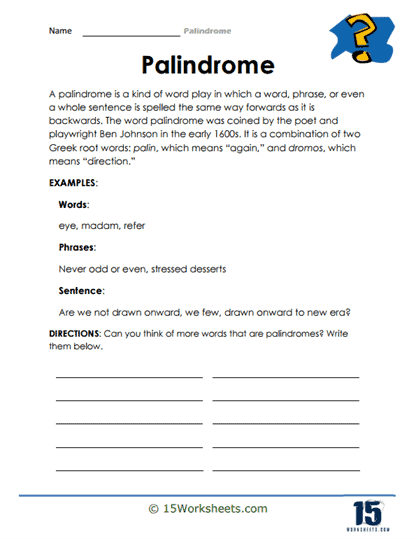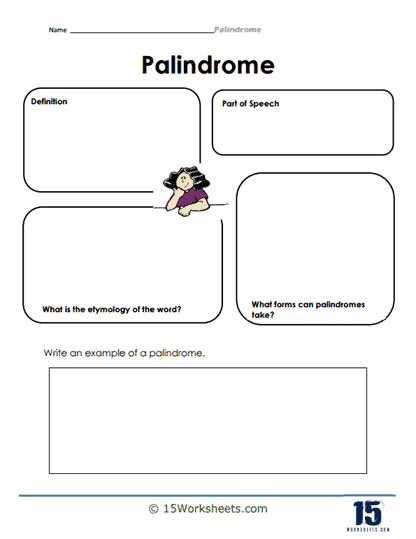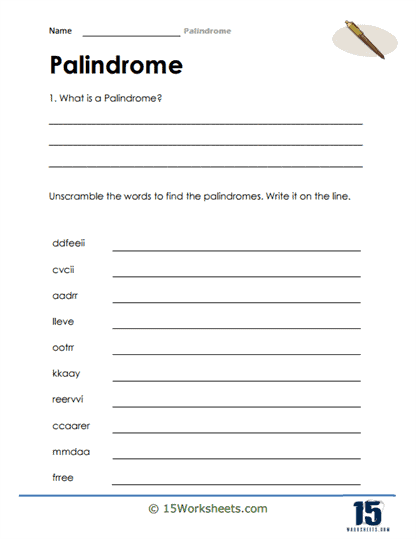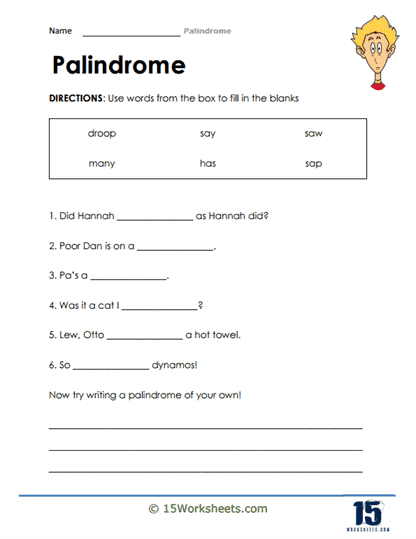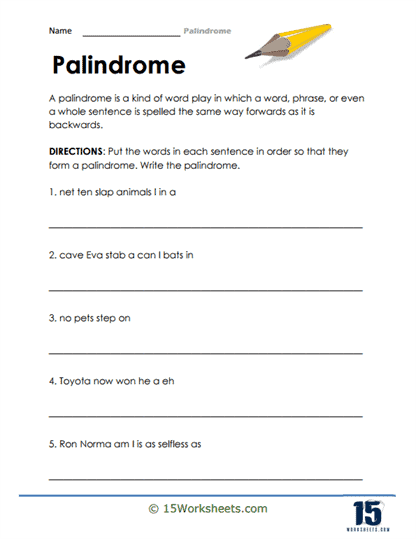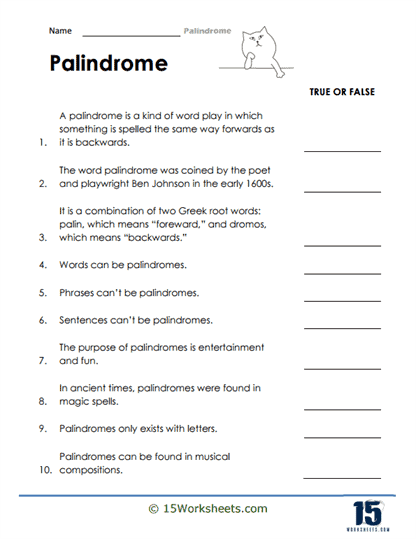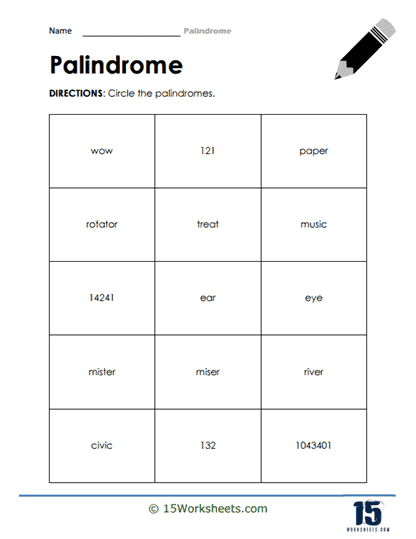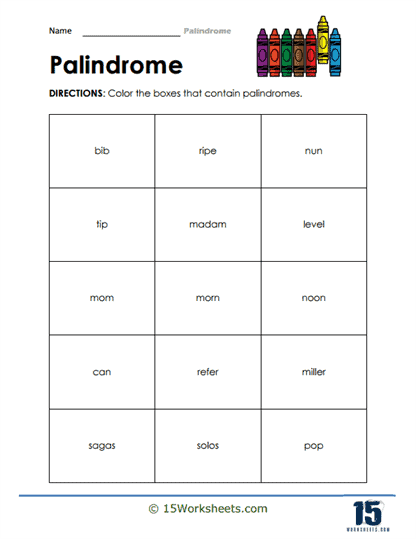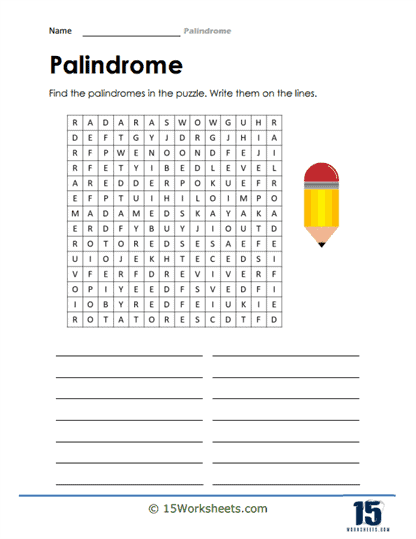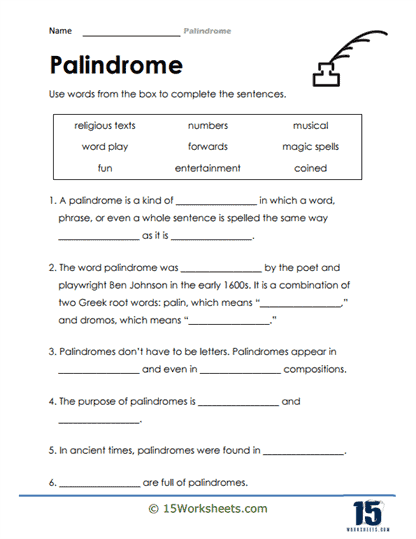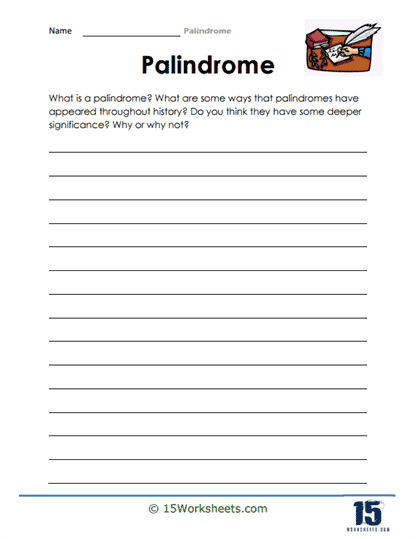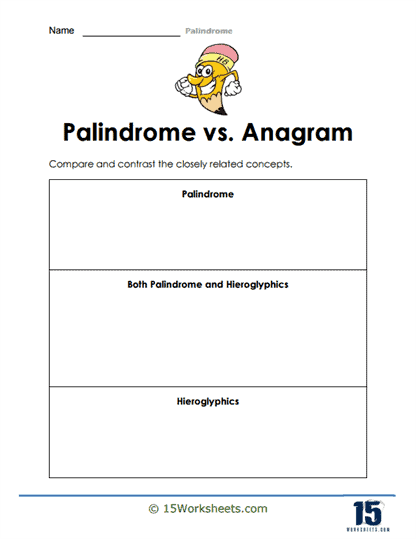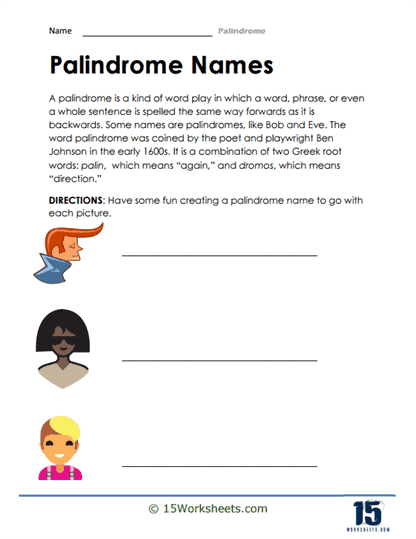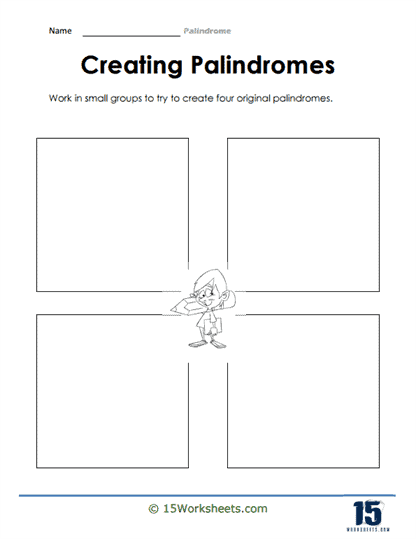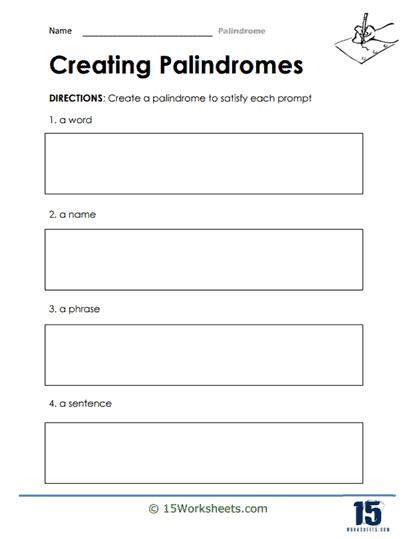Palindromes Worksheets
All About These 15 Worksheets
This series of worksheets on palindromes offers an engaging and interactive learning experience for students to discover and explore words that are spelled the same forwards and backwards. Through a variety of activities and exercises, students will enhance their vocabulary, develop critical thinking skills, and deepen their understanding of word structures and patterns. By completing these worksheets, students will:
- Think of their own examples of palindromes;
- Answer writing prompts that demonstrate their knowledge of what a palindrome is;
- Unscramble the letters in words to reveal palindromes;
- Fill in the blanks with the correct palindromes to fit the sentences;
- Write down the correct sequence of jumbled words to form a sentence that is a palindrome;
- Identify palindromes;
- Compare and contrast palindromes from anagrams;
- And create their own different palindromes.
These worksheets promote linguistic creativity, logical reasoning, and linguistic appreciation by engaging students in exploring the fascinating world of palindromic words and phrases. By promoting vocabulary expansion, critical thinking, and linguistic creativity, these worksheets enhance students’ language skills, pattern recognition abilities, and overall linguistic appreciation. Students develop a deeper understanding of word structures and gain confidence in utilizing language creatively.
What Is A Palindrome And Why Are They Important?
Palindromes are fun and interesting. It is a word, sentence, or phrase that reads the same backward and forward. You can find common examples like deed, level, etc., or unique phrases in other languages, such as Malayalam and Kanakanak.
The word palindrome comes from the Greek word “palindromos” which means “running back again.” It is a wordplay on words, sentences, numerals, and phrases that read the same backward and forward.
If we talk about the origin of palindromes, they date back to 70 A.D. The first palindrome was written in Latin, and it read, “Sator arepo tenet opera rotas.” Palindromic sentences are also found in other languages, like Greek and Sanskrit.
Palindromes are a great way to add creativity to your writing, although it is difficult to create a phrase or even a palindromic word. Palindromes are also used in genetic engineering, where scientists and researchers identify palindromic sequences to cut strands of the DNA at specific points.
Types of Palindromes
There are multiple types of palindromes available; let’s discuss the most common examples.
Numeric
Numbers can also be palindromic. These are usually dates and sequences. The format you adopt can affect the palindrome in the case of dates. But the date, “February 2, 2020,” is known as the “official palindrome day” because the date reads the same backward and forward no matter which format you use.
Other examples include:
1. 08.02.2080 – February 8, 2080
2. 1441
3. 10101
Character Units
Character-unit palindromes, also known as one-word palindromes, are single words usually used by English speakers that read the same backward and forward.
Examples include:
– Eye
– Gig
– Madam
– Radar
– Wow
– Mom
Lines
Also known as a line-unit palindrome, this writing style is usually used in a poem. In this, the poem has an initial set of lines that reverse the order halfway between the poem without changing the word order within the line.
Names
There are many palindromic names, such as;
– Ava
– Bob
– Eve
– Hayah
Aside from names, you can also find places and band names that are palindromic, such as;
– Akka, Morocco
– Daba Qabad, Somalia
– Hattah, Australia
– Kalak, Republic of Azerbaijan
– Obo, Central African Republic
Full Sentences
Palindrome sentences might not make complete sense, but they include a subject, verb, and predicate. In palindromic sentences, punctuation and formatting are unnecessary, but that doesn’t mean it cannot be done.
Examples include;
– Dammit, I’m mad!
– Drab as a fool, aloof as a bard.
– Evil did I dwell; lewd I did live.
Examples of palindromic phrases;
– Never odd or even
– No lemon, no melon
– Top spot
Now that you know what palindromes are, why they are important, and how they can be used, you can try creating one yourself. To start, practice backward reading, don’t care about making sense, and be mindful of spacing. It’s challenging but not impossible, and can be a lot of fun.

